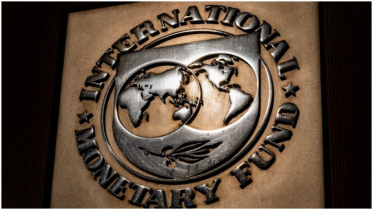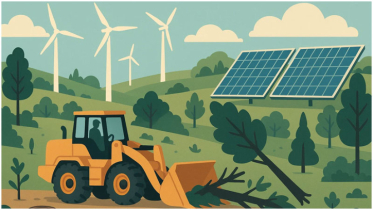What lies ahead for the Bangladesh economy?

2024 could be a turning point for Bangladesh’s economy if we can play our cards sensibly and strategically. The post-election Bangladesh could make a severe turnaround if the new government is severe enough to draw a roadmap for a new development journey with a desired set of reforms. These could be immediate, short-term, medium-term, and long-term. To curve out such a pathway, the leadership ought to look back and discover the strengths and weaknesses of Bangladesh’s development experience, particularly during the last fifteen years. The appropriate lessons for the new start of this journey require a lot of social searching on both sides of that experience.
Undoubtedly, Bangladesh’s amazing economic transformation has led to a ‘quantum jump’ in per capita income (current USD) since 2009. Between 1972 and 1975, Bangabandhu increased GDP per capita by 163% (USD 99 to USD 260). Yet, between 1975 and 1997, it increased by only 52 percent (to USD 395). Bangladesh, however, started its development journey in the right direction after 1996. Unfortunately, the journey was halted once again in 2001. The quantum jump in economic growth began after 2008-09. But growth alone may not be the best test of development. The most accurate measure of a nation’s progress is its ability to improve the quality of life of those at the ‘bottom of the pyramid.’ Fortunately, the unprecedented growth we witnessed in recent years has translated to improvements in ‘quality of life’ to a significant extent. The 5-year average growth rate accelerated from 4.15% in 1991-1995 to 7.13% in 2016-2020. Between 2010 & 2022, poverty came down from 31.5% to 18.7%. Extreme poverty came down from 17.6% to 5.6%. Expected life span increased from 65.2 years in 2005 to 73 years in 2022. The infant mortality rate was reduced from 51 to 22 per thousand live births. Maternal mortality decreased from 376 to 123 per one hundred thousand (between 2005-2020). These socio-economic indicators indicate that Bangladesh’s success should be attributed to its multidimensional approach to sustainable development. Yet, growth matters. The drivers of the inspirational growth story of Bangladesh are also multiple.
The transformation of the East-Asian miracle that took place in export-led manufacturing must be highlighted. RMG mostly led this lift in manufacturing in Bangladesh, but other export-led industries are growing. Remittance (exporting unskilled or low-skilled labor) has also been complementing this growth process.USD 233 billion inward remittances flew into Bangladesh through official channels throughout 2009-2023). Agriculture (ensuring food security amid the global crisis and creating scope for agro-exports) has been the third pillar of this inclusive growth story. Inclusive financing (use of digital technology to reach the bottom of the social pyramid) and women empowerment (female labor force participation rate increased from 30% to 38% between 2009 and 2022) were two other drivers of our inspirational multi-dimensional growth outcomes. Moreover,100% of the population under electricity coverage helped improve the quality of life as well as the business environment.
To illustrate, Bangladesh’s agriculture has gained mind-boggling momentum since the early days of its independence. Since then, rice production has almost quadrupled. Bangladesh is now 3rd in rice, vegetable, & fish production and 7th in mango production globally. Modern machinery is being used for almost 100% of the cultivation of our farmland. Besides the technological transformation of our agriculture, experimentation is in progress in introducing renewable energy in agriculture (over 15,000 solar irrigation pumps are in operation and show potential for the green transformation of rural Bangladesh). There are new possibilities for agro-processed product exports (USD 1.16 billion worth of annual exports) on the cards. Over the last decade- 109 climate adaptive seeds have been discovered by Bangladeshi scientists, indicating the commitment of the nation to face the climate change challenges indigenously. The export-oriented industries’ sustainable growth is benefitting the formal sector workers, with nearly 43% being women.
Despite the pandemic and Russo-Ukrainian war, Bangladesh’s annual exports exceeded the USD 50 billion mark for the second consecutive year in FY22-23 (USD 55.55 billion). RMG is still the main driver of exports, which has grown by 38 percent over the last five years (from USD 34.13 billion to USD 46.99 billion). Growth in the workers’ minimum wage has been higher (56 percent) than that in the average per capita income of the country over the last five years. These workers’ working environments have significantly improved since the Rana Plaza disaster. Many factories have gone green with state-of-the-art labor and energy compliances. Of the top 100 LEED-certified factories, 54 are from Bangladesh.
The remittance remains a cent percent value-added contributing factor to inclusive growth in Bangladesh. Over the last 15 years, annual remittance inflow has doubled from USD 8.94 billion to USD 21.50 billion. Skilling and re-skilling the workforce may help Bangladesh earn even more in the medium- to long-term. Currently, almost 75 percent of the migrant workers are either semi-skilled or low-skilled. A brighter future awaits Bangladesh as the sources of its future growth remain potentially vibrant. The human resources of the country are still young. Bangladesh’s workforce has a median age of 26.7 years (India 28.1 years, China 37.4 years). The rate of tertiary education will increase from 11% to 32% by 2026. By 2026, power generation capacity will increase by 57%. Each just or nearly completed mega-infrastructure may add 1.2% to GDP shortly. RMG exports may reach USD 100 billion by 2030. ICT industry is expected to reach USD 5 billion by 2026. Light engineering & pharmaceuticals will grow by 15% to 19% annually. Moreover, Bangladesh is to become the 9th largest consumer economy by 2030. By then, over 30 million citizens ( middle and affluent consumers) will belong to the MAC. Despite these highly optimistic projections, policymakers may not be wise to become overtly self-fulfilling. There are a plethora of challenges ahead.
Of these challenges, rising BoP Deficit and Depleting Reserve can be sources of macroeconomic instability. With Export (+ 52billion $), Import (- 70 bn $), Remittance (+ 22 bn $), Services & primary income (- 9 bn $), Current Account Balance is likely to remain negative by the end of the current FY (-5 bn $). However, the real pain in the neck remains the negative financial account. If the current trend continues, the financial account will end up in a deficit at the end of the fiscal year 2024 (it was -4 bn $ by the end of October 2023). This has been pushing the overall balance of payment in the negative territory and forcing the depletion of the foreign exchange reserve.
Prudent macroeconomic management can certainly ensure desired macroeconomic stability. Market-based exchange rates & interest rates should be the desired pathways to this recovery of stability. Promoting exports & controlling unnecessary imports will help. More remittance through official channels will add more strength to it. Bolstering bond markets is another way forward to minimize fiscal deficit. Rationalizing public spending and improving revenue collection should be at the core of this fiscal consolidation. Safeguarding households against inflation should remain high on our policy agenda. High inflation has been creating pressure on households (almost double-digit overall inflation and double-digit food inflation prevailing currently). Policymakers are, therefore, rightly prioritizing controlling inflation (as evidenced by their election commitments). Because of significant currency devaluation and rationalization of subsidies, it will be challenging to reduce inflation in 2024 significantly. Low-income households will also require new safety net measures (digital databases of beneficiaries and digital transformation of benefits are prerequisites). Long-term challenges must also be put in place for sustained macroeconomic stability. We must also keep in mind that almost 32 million people are living below the national poverty line. Also, we must create adequate jobs for 2 million youth entering the workforce every year. So, we need to induce incentives for higher investment by creating an enabling environment for businesses. We must also sustainably manage economic transformation (urbanization) and ensure resilience to climate change. The increasing scope of formal employment and income-generating activities (IGAs) for the youthful workforce should remain a top priority for policymakers. It must be noted that only about 200,000 jobs are created annually in the formal sector, whereas 2 million youth enter the job market each year. Skilling and re-skilling of the workforce, therefore, should be at the top of our agenda. Further emphasis on technical and vocational education (TVET) is required. Despite commendable achievements, TVET enrollment remains around 17% (with about one-fourth being women). With a 25% share of the GDP and 30% of the employed workforce- MSMEs of Bangladesh hold enormous potential as job creators. Yet, MSMEs face structural bottlenecks such as access to finance, infrastructural barriers, and technological shortcomings. As already indicated, climate change is perhaps the most significant barrier to Bangladesh’s journey of inclusive development. Bangladesh is vulnerable to both disasters and climate change and ranked the seventh extreme disaster risk-prone country in the world as per the Global Climate Risk Index 2021 report. Regarding economic losses, Bangladesh is ranked fifth, indicating the economy is consistently at risk from climate catastrophes, impacting human health, economy, agriculture, and ecosystem. However, the country has enormous potential for climate adaptive development. For example, 8.1 million liters of diesel are used annually for irrigation, and solar irrigation pumps(SIPs) could be a sustainable alternative to the excessive use of fossil fuels. Consistently investing around 10% of the national budget for SSNPs has yielded great results. For a soon-to-be ‘developing country,’ new programs should be suitable for new realities (e.g., universal pension schemes, health insurance, etc.). We need new measures to go beyond conventional cash or in-kind support for the socially vulnerable segments of our population. Digitization will, of course, reduce leakage and improve last-mile delivery. Ensuring food security for a burgeoning population will remain a challenge. However, between 2008 and 2023, the Global Hunger Index score was commendably reduced from 30.8 to 19.0. Yet, over 21% of the population (roughly 37 million) face moderate food insecurity (having food stock for 51 days). Sudden loss of income or disruptions in the supply chain can put these households in peril.
To conclude, despite many successes, dealing with the remaining poverty in the next decade will require new strategies. Considering the sizable portion of our vulnerable non-poor groups who could ‘fallbacks,’ we ought to remain vigilant about improving our social safety net strategy. Cash support, preferably transferred through digital channels, may ensure the protection of these people amid crises. Context-specific consideration of multidimensional poverty indices to complement income-based measures, plus maintaining dynamic databases of people experiencing poverty and the vulnerable, could add value to our social safety net strategy.
On the whole, Bangladesh has been moving on despite many challenges. And it is firmly on its way to becoming a prosperous country in about a couple of decades, overcoming all these challenges provided we remain focused on our inclusive and transparent development strategy.
This writer is an Emeritus Professor at Dhaka University and former Governor of Bangladesh Bank.
Source: The Business Eye
.png)




